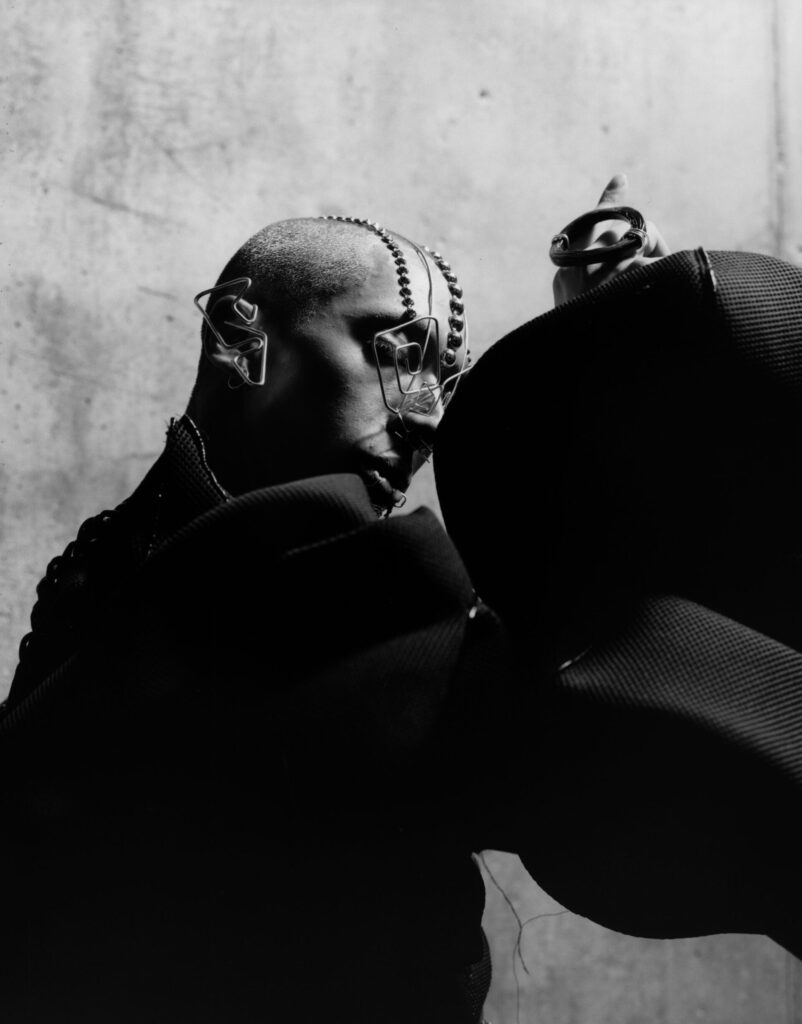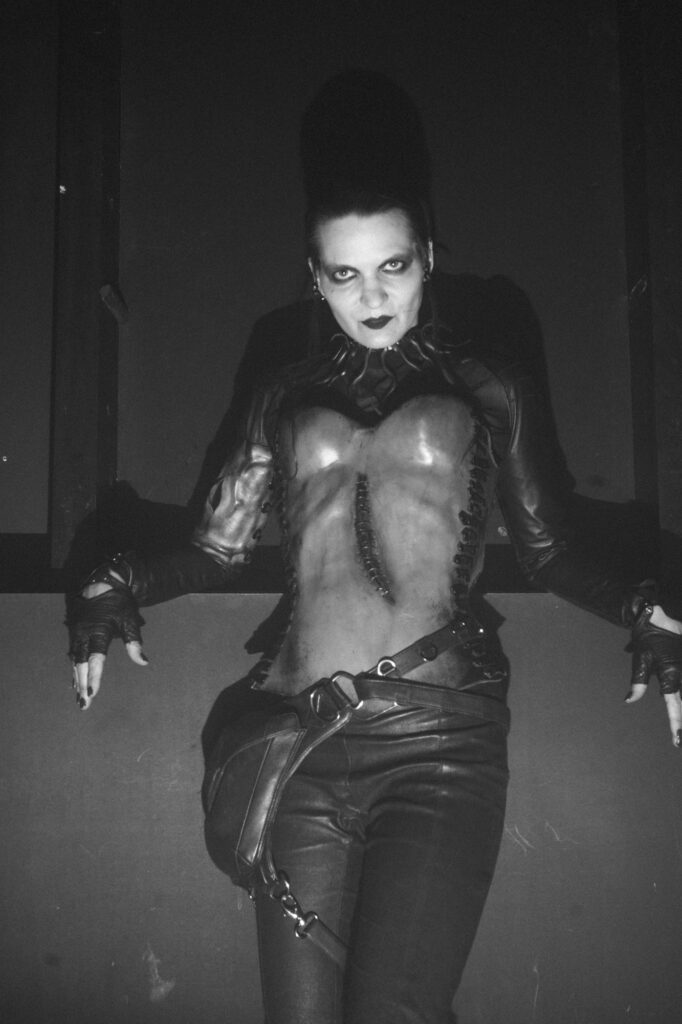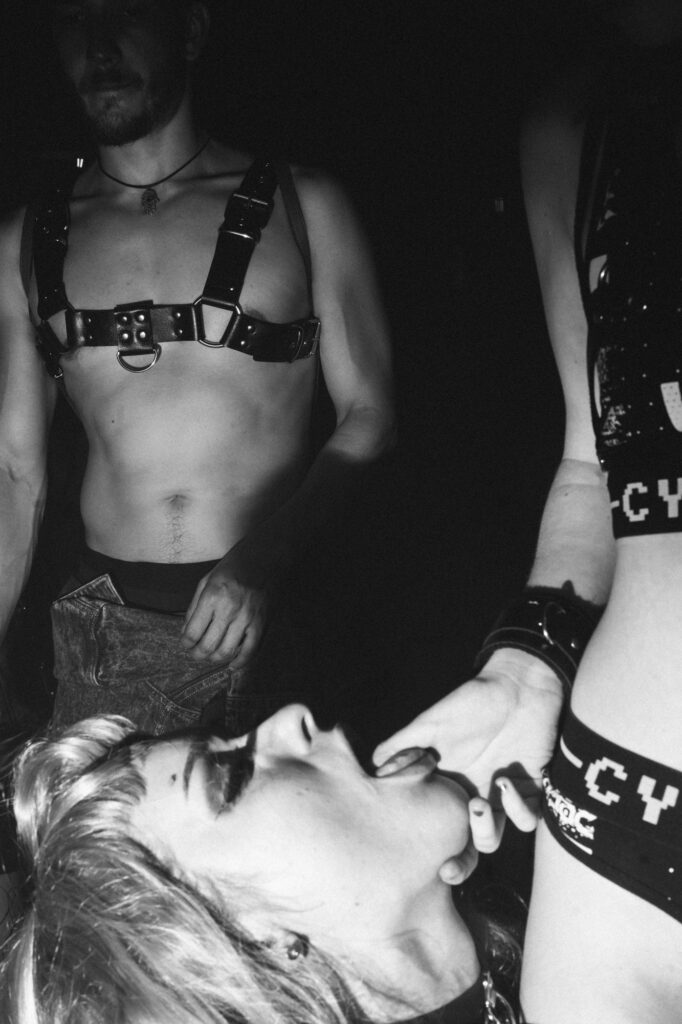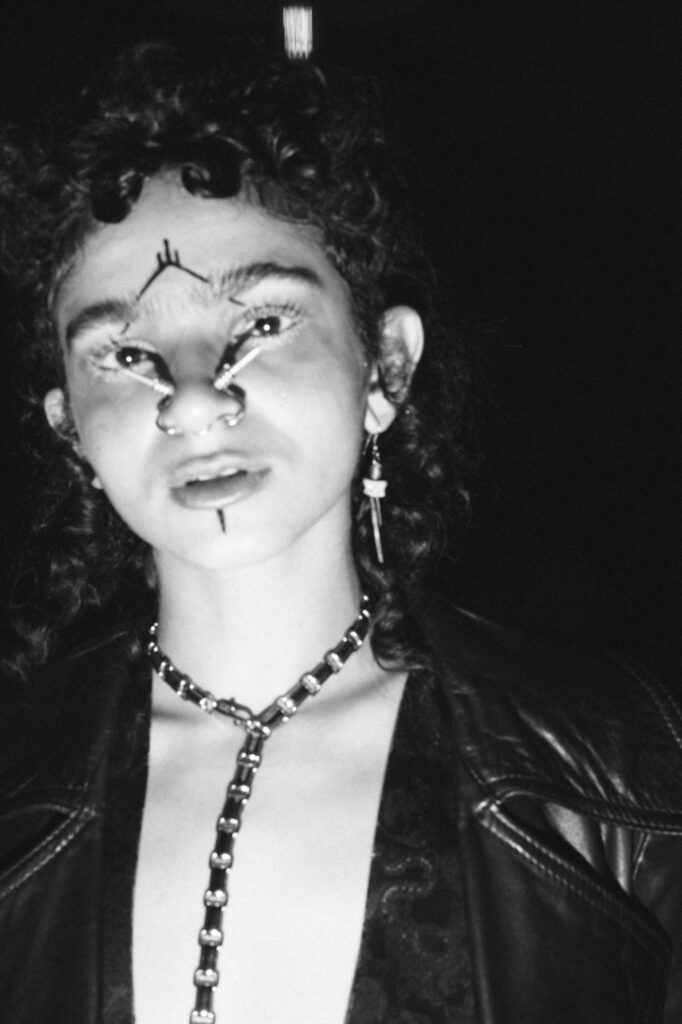CHRISTOPHER POLACK and the art of IMPERFECTION

Christopher Polack’s work has predominantly documented subcultures and their residual affairs, most notably triangulating creative subsets of the arts, fashion and lifestyle. Embodying his own raw aesthetic, however varied his subjects may be, is what makes Polack’s photographs so identifiable and authentic. Polack has a knack for capturing his subjects’ vivaciousness, whether it be documentary, circumstantial or editorial Vogue Italia, Hunger Magazine and Nike. Across his oeuvre, the artist has perfected the art of translating his “hunt for chaos” to his audience. Annabel Blue sat down with Polack to discuss his longing for Europe, his Goth DJ and Club Kids series and his views on retaining unruly creativity.
Annabel Blue: Hey Chris, let’s start from the beginning. How did you get into photography?
Christopher Polack: I’ve always loved fast, unpredictable scenarios. The thrill of a somewhat uncontrolled environment is rooted in my past as a pro-BMX rider, which led to photography and filmmaking. The chaos of ‘hunting’ for an image instead of creating an image was what drove me instinctively. That covered extreme sports, street, documentary, fashion, lifestyle, and anything else that moved. Today, I am often creating atmospheres that encourage chaos or poetry to play out in front of my lens, and again, I find myself in the unpredictable position of ‘hunting’.
AB: What do you think makes someone feel comfortable in front of your camera?
CP: Not being a creep helps. Atmosphere for the occasion is crucial to my work. Music, pace and communication are all essential to my approach. I’m not a funny guy, but I’ll have you laughing at me in no time.
AB: Can you tell me about your experiences overseas in the creative industry? When did you get your first ‘big break’, so to speak?
CP: I’ve been travelling between Australia, New York and London for the past six years, but I moved full time to London in 2018. Each place has a different rhythm. London is a very different animal from Australia. So much talent hustling for a slice of the pie keeps you on your toes. Plus, the number of avenues available to an artist to show their work is phenomenal. There are hundreds of magazines, galleries, online portals, zines, exhibitions, laneways, and so on, even more so today with so much happening online. When I’m in London, I tend to go out a couple of times a week to catch an exhibition. That keeps the creative juices flowing. Currently, I’m back in Australia, enjoying its chill, easy-going, safe-living, and warm weather, but I do miss Europe and the buzz of culture and travel. The arts are proudly exhibited throughout Europe, so anytime you're travelling, you’re bathed in history and beauty. It’s inspiring. As for my ‘big break’, I’m not entirely sure. I suppose my first published editorial opened doors with certain creatives. A commision for a client led to a new lead to another project, and so on. I’ve been fortunate to work with Vogue Italia, Istituto Marangoni, David Koma, Nike, Vans, Hunger and many others. One highlight from late last year is the project I did for Istituto Marangoni, a cultural institution in fashion and the arts. I had carte blanche to execute in my own world. But every project I do inspires me for the next. That next one can only be better as it’s the one not yet conceived, and thus it’s made up of the freshest energy and ideas.
AB: Tell me about the making of your Goth DJ series. CP: Initially, it was just an idea—to shoot portraits of certain cultures playing on the fringes of society. But as I got to meet more and more members of this ‘scene’, I was increasingly drawn to their energy and acceptance without judgement. The music and look of the community brought me there, but the love and embrace kept me there. I began documenting them, and I don’t see it coming to an end any time soon.
AB: Do you have a common theme that guides your work?
CP: Unconventional and unapologetic. The images I create today are raw and authentically human. Photography teaches me to embrace diversity in my work and in my life. I enjoy exploring the concept
of beauty and not limiting myself to one standard, but instead experimenting with what can be possible for a more inclusive future.
AB: What has been the best piece of creative advice you’ve received?
CP: “Discomfort is the price of admission to a meaningful life.”
AB: Who and what are inspiring you at the moment?
CP: I’ve recently become a dad (well, a year ago now), and my daughter has given me a newfound focus. Her. That’s it. Simple. I get up in the morning, pick her up out of her cot, cuddle her, change her, and then we play with her toys or practise newly learned skills, all while I just look at her every detail. I fall in love with her every day. Otherwise, the usual suspects: music, film, travel, friends, culture, history, art, books and so on. But these days I look less at other image makers and try to relearn by looking around. I do it by meeting new walks of life. If you allow yourself to be led by new people, your life takes on a new perception, and that’s interesting to me. I am inspired by allowing myself to go into new worlds and leaving behind my comfort zones.
AB: What do you want to see changed in the creative industry?
CP: This topic is too grand to answer in a paragraph. But I’ll touch on one thought. Creatives need to retain their sense of individualism and rebellion, otherwise they fall into the masses and their art only speaks about fashion and trends rather than exploration and discovery. To me, creativity is the definition of questioning and imagining alternative experiences. And sometimes even offering up solutions to problems or presenting a single-minded point of view without fearing retribution. Today, a lot of art has become more about pleasing people. Pretty art is not interesting to me, but I think it’s a reflection of the times we’re living in. We’re more concerned with living the dream of success than risking it all for the experience. You see fewer artists getting into art for political or rebellious tendencies. Don’t get me wrong, I’m all for getting paid, hence why I work in fashion and advertising. But I also think this mindset applies to fashion photography. There’s so much sameness. I hope the global movement we’re experiencing will shake things up. I mean, we’re slowly seeing things roll out around the world that don’t conform to preconceived notions of beauty, and that’s interesting to me.
christopherpolack.net
Artist Josh Robbins On 'Natural Abstraction'
By Riley Orange
Julian Klincewicz Sees No Moment But Now
By Claire Summers
In The Studio With Tom Pendergast
By Claire Summers
GAETANO PESCE IS MOULDING OUR MINDS
By Octavius La Rosa & Annabel Blue
Australian Artist and Designer Ajay Jennings Presents 'Limbo', a Capsule and Photo Essay
By To Be Team
Picture Me Rollin’ – The Photographs of Estevan Oriol
By Mahmood Fazal





